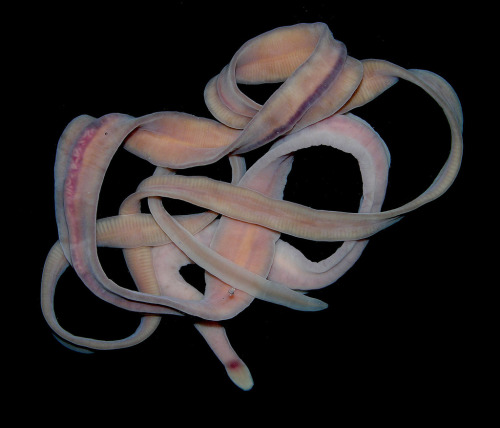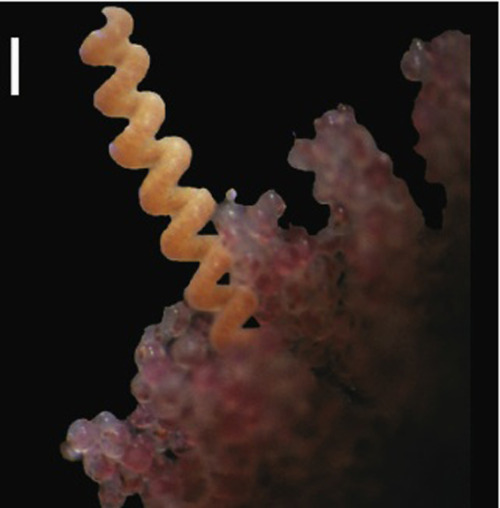somuchscience:14 Fun Facts about Marine Ribbon Worms (Nemerteans)by Emily Frost, Surprising Science
somuchscience:14 Fun Facts about Marine Ribbon Worms (Nemerteans)by Emily Frost, Surprising Science Blog, Smithsonian MagWhether they’re on a rain-soaked sidewalk, in the compost bin or on the end of a fish hook, the worms most people know are of the segmented variety. But what about all the other worms out there?With more than 1,000 species of ribbon worms (phylum Nemertea), most found in the ocean, there is a huge range of sizes and lifestyles among the various types. A defining characteristic of ribbon worms is the presence of a proboscis—a unique muscular structure inside the worm’s body. When attacking prey, they compress their bodies to push out the proboscis like the finger of a latex glove turned inside-out.Here are 14 other fun facts about them:1. The largest species of ribbon worm is the bootlace worm, Lineus longissimus, which can be found writhing among rocks in the waters of the North Sea. Not only is it the largest nemertean, but it may also be the longest animal on the planet! Uncertainty remains because these stretchy worms are difficult to accurately measure, but they have been found at lengths of over 30 meters (98 feet) and are believed to even grow as long as 60 meters (197 feet)—longer than the blue whale! Despite their length they are less than an inch around.2. The smallest ribbon worm species is less than a centimeter long, and resembles a piece of thread more closely than what we think of as a worm.3. Ribbon worms have highly developed muscles that allow them to contract their bodies, shrinking to a tenth of their extended length when threatened.4. Talk about stretching: ribbon worm muscles don’t just contract–they can also expand, allowing some species to swallow prey (such as other kinds of worms, fish, crustaceans, snails and clams) that are more than double the width of their narrow bodies5. The proboscis varies among the species. Some are sticky or have suckers to help grasp prey, and some species, like those in the order Hoplonemertea, even stab their prey with a sharp spike, called a stylet, on the proboscis.6. Because the stylets often are lost during an attack, the worms continually make and use replacements that they have in reserve in internal pouches.7. As a second line of defense, many ribbon worms are poisonous and taste bad. Several species contain tetrodotoxin, the infamous pufferfish venom that can induce paralysis and death by asphyxia. It’s still not known exactly how the toxins are produced—they may linger in the worms from ingested bacteria—but they deter predators from taking a bite. Some even eject toxins from their proboscis.8. Some ribbon worms sneak up on their prey, lying in wait buried in the sandy seafloor. One species of worm will pop up from its home in the sand when a fiddler crab walks over. The worm will cover the prey with toxic slime from its proboscis, paralyzing the crab so the ribbon worm can slide into a crack in the shell and eat the crab from the inside out.Continue reading… -- source link
Tumblr Blog : somuchscience.tumblr.com



